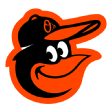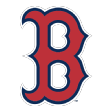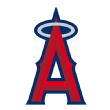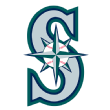Who is each team's X factor?
You'll hear an X factor used to describe the player a team needs to be good if it wants to have a good season. I don't think that gets us all the way there, because according by that definition the X factor is just the best player on a given roster. So here's what we'll do. First, players and not groups of players or traits are X factors; an entire infield can't be an X factor. Health, also, can't be an X factor; if it could, it would be the X factor for everyone. For this exercise, an X factor is one player.
To whittle things down, I've highlighted volatility. These 2018 season X factors are all volatile players. They're also all important players. They're both important and hard to predict, and I think they all have a significance that's greater than just their own roster spot. These are all players of outsize importance, who could very well make or break the season ahead. Even this definition might not be perfect, and you might think an X factor is something else entirely, but at least now I've explained the thinking behind the following picks.
 Arizona Diamondbacks: Ketel Marte. Whether Marte ultimately ends up spending more time at second or short, he's going to be exciting. The team fended off trade interest in him this winter, and because of the blend of speed, discipline and surprising power, I've identified Marte as my favorite breakout candidate. What that doesn't mean is that it's going to come true. Marte fell on his face in 2016 and for all I know that could happen twice, which would trip up Arizona's intended run to the playoffs. They gave up Brandon Drury in part because they believed they weren't going to need him.
Arizona Diamondbacks: Ketel Marte. Whether Marte ultimately ends up spending more time at second or short, he's going to be exciting. The team fended off trade interest in him this winter, and because of the blend of speed, discipline and surprising power, I've identified Marte as my favorite breakout candidate. What that doesn't mean is that it's going to come true. Marte fell on his face in 2016 and for all I know that could happen twice, which would trip up Arizona's intended run to the playoffs. They gave up Brandon Drury in part because they believed they weren't going to need him.
 Atlanta Braves: Dansby Swanson. For all the talk about the Braves building around pitching, the young players I like the most are Ozzie Albies and Ronald Acuna. Because of those two, I can picture the Braves as a dark horse playoff team, and a rebound season from Swanson would make the picture far more promising. He turned 24 in February, and there's no giving up after one down year. If Swanson takes a step forward, the Braves could suddenly look good at several positions. And then -- especially then -- it'll be possible to see this rebuild transition into something else.
Atlanta Braves: Dansby Swanson. For all the talk about the Braves building around pitching, the young players I like the most are Ozzie Albies and Ronald Acuna. Because of those two, I can picture the Braves as a dark horse playoff team, and a rebound season from Swanson would make the picture far more promising. He turned 24 in February, and there's no giving up after one down year. If Swanson takes a step forward, the Braves could suddenly look good at several positions. And then -- especially then -- it'll be possible to see this rebuild transition into something else.
 Baltimore Orioles: Chris Tillman. The O's are about to sign Alex Cobb, which relieves some pressure on Tillman. Nevertheless, I think he'll be a big deal for an Orioles team that has tried to avoid a rebuild. Before last season, Tillman was considered the ace of the staff. Thanks mostly to injuries, Tillman went off the rails in 2017. The Orioles say they've just forgotten all about it and are willing to give Tillman the benefit of the doubt. Should he recover, the Orioles could actually have enough pitching to remain relevant yet again. Then again, Tillman might be toast -- and so might be the Orioles' competitive window.
Baltimore Orioles: Chris Tillman. The O's are about to sign Alex Cobb, which relieves some pressure on Tillman. Nevertheless, I think he'll be a big deal for an Orioles team that has tried to avoid a rebuild. Before last season, Tillman was considered the ace of the staff. Thanks mostly to injuries, Tillman went off the rails in 2017. The Orioles say they've just forgotten all about it and are willing to give Tillman the benefit of the doubt. Should he recover, the Orioles could actually have enough pitching to remain relevant yet again. Then again, Tillman might be toast -- and so might be the Orioles' competitive window.
 Boston Red Sox: David Price. There's no question that a healthy Price is absolutely outstanding, but last year he had a health scare that thankfully didn't require major surgery. What worries me is what might still be going on in there. Every pitcher in the world shows signs of wear and tear, but Price could be one pitch away from an entire lost season. I just don't find Price as reliable as I used to, and if he doesn't provide his 30-plus good starts, the Red Sox would be hurting for depth.
Boston Red Sox: David Price. There's no question that a healthy Price is absolutely outstanding, but last year he had a health scare that thankfully didn't require major surgery. What worries me is what might still be going on in there. Every pitcher in the world shows signs of wear and tear, but Price could be one pitch away from an entire lost season. I just don't find Price as reliable as I used to, and if he doesn't provide his 30-plus good starts, the Red Sox would be hurting for depth.
 Chicago Cubs: Ian Happ. The Cubs are very good and deep, with few vulnerabilities. I nearly selected Tyler Chatwood, but he's only a fifth starter. Happ stands to be important, both for his skills and ability to float around, covering at many different positions, which takes pressure off guys like Jason Heyward, Albert Almora, Kyle Schwarber and Ben Zobrist. The question for Happ is how successful he can be with a strikeout rate north of 30 percent. If he struggles, that would take a big bite out of the Cubs' outfield, maybe opening the door for the Cardinals or Brewers to mount a charge in the NL Central.
Chicago Cubs: Ian Happ. The Cubs are very good and deep, with few vulnerabilities. I nearly selected Tyler Chatwood, but he's only a fifth starter. Happ stands to be important, both for his skills and ability to float around, covering at many different positions, which takes pressure off guys like Jason Heyward, Albert Almora, Kyle Schwarber and Ben Zobrist. The question for Happ is how successful he can be with a strikeout rate north of 30 percent. If he struggles, that would take a big bite out of the Cubs' outfield, maybe opening the door for the Cardinals or Brewers to mount a charge in the NL Central.
 Chicago White Sox: Lucas Giolito. Sox fans have embraced the rebuild, but no one is patient forever. At some point, you want to see top prospects prove themselves, and now Giolito finally seems ready to emerge. The former top prospect has had a remarkable spring, complete with apparent mechanical changes. There's a real possibility this is just a blip, and Giolito is still a work in progress. But if his velocity is really up, and if he can now really throw secondary pitches where he wants to, that's a top-starter profile. Giolito might set the tone for a team preparing to get good in a hurry.
Chicago White Sox: Lucas Giolito. Sox fans have embraced the rebuild, but no one is patient forever. At some point, you want to see top prospects prove themselves, and now Giolito finally seems ready to emerge. The former top prospect has had a remarkable spring, complete with apparent mechanical changes. There's a real possibility this is just a blip, and Giolito is still a work in progress. But if his velocity is really up, and if he can now really throw secondary pitches where he wants to, that's a top-starter profile. Giolito might set the tone for a team preparing to get good in a hurry.
 Cincinnati Reds: Tyler Mahle. The problem for a while has been that the Reds couldn't develop pitching, and/or that they couldn't keep it healthy. Luis Castillo is the obvious bright spot; he might be an ace already. But Mahle is moving forward as well, as the next young Reds starter prepared to make a strong impression. The Reds could shed their old reputation, if Mahle proves capable. They're going to need homegrown pitching to eventually climb into contention.
Cincinnati Reds: Tyler Mahle. The problem for a while has been that the Reds couldn't develop pitching, and/or that they couldn't keep it healthy. Luis Castillo is the obvious bright spot; he might be an ace already. But Mahle is moving forward as well, as the next young Reds starter prepared to make a strong impression. The Reds could shed their old reputation, if Mahle proves capable. They're going to need homegrown pitching to eventually climb into contention.
 Cleveland Indians: Yonder Alonso. Despite Alonso's breakout 2017, he didn't attract a huge market as a free agent after tripling his previous career high in home runs. But Alonso's second-half .774 OPS made it easy to conclude that opponents had figured him out. From the Indians' side, there's no ignoring the first-half .934 OPS. If Alonso truly is a new man and a new hitter, then the Indians will have added a middle-of-the-order threat on a bargain deal and make them even more of a juggernaut.
Cleveland Indians: Yonder Alonso. Despite Alonso's breakout 2017, he didn't attract a huge market as a free agent after tripling his previous career high in home runs. But Alonso's second-half .774 OPS made it easy to conclude that opponents had figured him out. From the Indians' side, there's no ignoring the first-half .934 OPS. If Alonso truly is a new man and a new hitter, then the Indians will have added a middle-of-the-order threat on a bargain deal and make them even more of a juggernaut.
 Colorado Rockies: Ian Desmond. One might have interpreted the Carlos Gonzalez re-signing as a threat to Desmond's job security; instead, it appears Desmond will shift back to first base. Even though 2017 was bad, that doesn't close the book on him -- he had a bad 2015, too, and then he rebounded. If Desmond can play like a regular again, that could help the Rockies at first base as well as the outfield. An unproductive Desmond shifts pressure to others who are either unproven or declining.
Colorado Rockies: Ian Desmond. One might have interpreted the Carlos Gonzalez re-signing as a threat to Desmond's job security; instead, it appears Desmond will shift back to first base. Even though 2017 was bad, that doesn't close the book on him -- he had a bad 2015, too, and then he rebounded. If Desmond can play like a regular again, that could help the Rockies at first base as well as the outfield. An unproductive Desmond shifts pressure to others who are either unproven or declining.
 Detroit Tigers: Daniel Norris. It's not entirely clear to me what happened to Norris. One year ago today, I felt like Norris was in the middle of a breakout. Then every single number went in the wrong direction, and Norris didn't fare any better in the minors. This is a rebuilding team that's still light on impact young talent, but Norris is still the young player who intrigues me the most.
Detroit Tigers: Daniel Norris. It's not entirely clear to me what happened to Norris. One year ago today, I felt like Norris was in the middle of a breakout. Then every single number went in the wrong direction, and Norris didn't fare any better in the minors. This is a rebuilding team that's still light on impact young talent, but Norris is still the young player who intrigues me the most.
 Houston Astros: Marwin Gonzalez. I'm not convinced the Astros have an X factor. The Astros are obnoxiously good and obnoxiously deep, and few of their players appear volatile, so it's Gonzalez almost by default. Gonzalez is like the club's Mr. Fix-It, as last year he appeared at six positions. He's an important part of the Astros' depth, because he can cover them in so many places. It makes sense that Gonzalez probably won't repeat what he did offensively in 2017. Should the regression be particularly severe, then and maybe only then could the Astros have a weakness.
Houston Astros: Marwin Gonzalez. I'm not convinced the Astros have an X factor. The Astros are obnoxiously good and obnoxiously deep, and few of their players appear volatile, so it's Gonzalez almost by default. Gonzalez is like the club's Mr. Fix-It, as last year he appeared at six positions. He's an important part of the Astros' depth, because he can cover them in so many places. It makes sense that Gonzalez probably won't repeat what he did offensively in 2017. Should the regression be particularly severe, then and maybe only then could the Astros have a weakness.
 Kansas City Royals: Jorge Soler. Last I checked, Soler owns a four-digit spring-training OPS. Now, that's spring-training OPS, and Soler has been playing in Arizona, but the talk of the offseason in Kansas City was that Soler had put in the work to re-energize his career. Soler has always shown offensive flashes of superstar ability; he's 26 years old, and under team control through 2021. An excellent Soler would help the Royals now, and also potentially allow them to avoid a deep rebuild in the future. If he doesn't hit, there aren't enough players in the organization who can.
Kansas City Royals: Jorge Soler. Last I checked, Soler owns a four-digit spring-training OPS. Now, that's spring-training OPS, and Soler has been playing in Arizona, but the talk of the offseason in Kansas City was that Soler had put in the work to re-energize his career. Soler has always shown offensive flashes of superstar ability; he's 26 years old, and under team control through 2021. An excellent Soler would help the Royals now, and also potentially allow them to avoid a deep rebuild in the future. If he doesn't hit, there aren't enough players in the organization who can.
 Los Angeles Angels: Garrett Richards. I was talking with someone high up with the Angels recently, and the conversation arrived at the matter of playing time. When I asked how confident the team is projecting innings from its starting pitchers, the person laughed for a solid eight seconds. Shohei Ohtani might be the obvious selection here; I also gave some thought to Albert Pujols. But Richards is going to be massively important. Thanks to arm problems, Richards has made only six big league starts in each of the past two seasons. But he has avoided Tommy John surgery thanks to a stem cell treatment, and he has pitched like an ace in the past, even exceeding 200 innings in 2015. The Angels' rotation looks so much better if Richards is there as a stabilizing force. If he needs to return to the disabled list, then the team will have to rely on pitchers who haven't been reliable.
Los Angeles Angels: Garrett Richards. I was talking with someone high up with the Angels recently, and the conversation arrived at the matter of playing time. When I asked how confident the team is projecting innings from its starting pitchers, the person laughed for a solid eight seconds. Shohei Ohtani might be the obvious selection here; I also gave some thought to Albert Pujols. But Richards is going to be massively important. Thanks to arm problems, Richards has made only six big league starts in each of the past two seasons. But he has avoided Tommy John surgery thanks to a stem cell treatment, and he has pitched like an ace in the past, even exceeding 200 innings in 2015. The Angels' rotation looks so much better if Richards is there as a stabilizing force. If he needs to return to the disabled list, then the team will have to rely on pitchers who haven't been reliable.
 Los Angeles Dodgers: Walker Buehler. I haven't done a lot of selecting from pitching depth, but the Dodgers are a special case. They aren't short on good pitchers, but they could be short on pitchers who can be reliably healthy. The Dodgers make ample use of their 40-man roster, and with a rotation that's a little thinner than the club is used to, Buehler might end up being crucial down the stretch. Over 98 innings between four levels last year, Buehler managed 137 strikeouts. If he's ready, the Dodgers have an excellent young reinforcement.
Los Angeles Dodgers: Walker Buehler. I haven't done a lot of selecting from pitching depth, but the Dodgers are a special case. They aren't short on good pitchers, but they could be short on pitchers who can be reliably healthy. The Dodgers make ample use of their 40-man roster, and with a rotation that's a little thinner than the club is used to, Buehler might end up being crucial down the stretch. Over 98 innings between four levels last year, Buehler managed 137 strikeouts. If he's ready, the Dodgers have an excellent young reinforcement.
 Miami Marlins: Lewis Brinson. Let's be honest -- there's hardly any saving this Marlins season. There's barely even a point to this Marlins season. A big year from Brinson, however, could at least be symbolic. It would give fans something to cling to as the rebuild ambles along. If Brinson looks like a Rookie of the Year candidate, the Marlins might just be bad instead of awful. If Brinson fails to emerge, that could be no less symbolic, but right now he's the jewel. Which means he's about to get the bulk of the attention, for better or worse.
Miami Marlins: Lewis Brinson. Let's be honest -- there's hardly any saving this Marlins season. There's barely even a point to this Marlins season. A big year from Brinson, however, could at least be symbolic. It would give fans something to cling to as the rebuild ambles along. If Brinson looks like a Rookie of the Year candidate, the Marlins might just be bad instead of awful. If Brinson fails to emerge, that could be no less symbolic, but right now he's the jewel. Which means he's about to get the bulk of the attention, for better or worse.
 Milwaukee Brewers: Jimmy Nelson. When the Brewers added Christian Yelich and Lorenzo Cain, it wasn't just about getting good in 2018; those are both quality long-term players. But when I look at the roster, what stands out as missing is a front-of-the-rotation starter. Everywhere else, the Brewers are all right but the rotation is murky. Nelson could be that front-end starter. That's what he was last summer. But then he needed surgery for a strained rotator cuff and a partially torn labrum; that's a major operation. Nelson is a big flashing question mark. If he gets back and looks like himself, the Brewers should have everything they need. If not, that's a lot of pressure on Chase Anderson and Zach Davies.
Milwaukee Brewers: Jimmy Nelson. When the Brewers added Christian Yelich and Lorenzo Cain, it wasn't just about getting good in 2018; those are both quality long-term players. But when I look at the roster, what stands out as missing is a front-of-the-rotation starter. Everywhere else, the Brewers are all right but the rotation is murky. Nelson could be that front-end starter. That's what he was last summer. But then he needed surgery for a strained rotator cuff and a partially torn labrum; that's a major operation. Nelson is a big flashing question mark. If he gets back and looks like himself, the Brewers should have everything they need. If not, that's a lot of pressure on Chase Anderson and Zach Davies.
 Minnesota Twins: Trevor May. The last time May was healthy (in 2016), he had an ERA over 5.00, but it's also true that the last time he was healthy he struck out a third of his opponents. Tommy John surgery cost May his 2017, but now we're looking at a guy who could give the Twins options, even though he's still technically on the rehab path. He's not a possibility for their Opening Day roster, but he should return in only a few months. If he has his old stuff, he'll give the Twins strikeouts few of their other pitchers provide. That would be a jolt, no matter the role.
Minnesota Twins: Trevor May. The last time May was healthy (in 2016), he had an ERA over 5.00, but it's also true that the last time he was healthy he struck out a third of his opponents. Tommy John surgery cost May his 2017, but now we're looking at a guy who could give the Twins options, even though he's still technically on the rehab path. He's not a possibility for their Opening Day roster, but he should return in only a few months. If he has his old stuff, he'll give the Twins strikeouts few of their other pitchers provide. That would be a jolt, no matter the role.
 New York Mets: Amed Rosario. Noah Syndergaard is the big question mark on the pitching side ... or Matt Harvey or Steven Matz or Zack Wheeler. And on the position-player side, the big question mark is Michael Conforto. We all know the Mets could become almost anything; it's a team of question marks. At least Rosario is a different sort of question mark, a young shortstop who wants to put a miserable big league debut behind him. Rosario can make contact, run and play defense, which might give the Mets some athleticism they've been lacking for a while.
New York Mets: Amed Rosario. Noah Syndergaard is the big question mark on the pitching side ... or Matt Harvey or Steven Matz or Zack Wheeler. And on the position-player side, the big question mark is Michael Conforto. We all know the Mets could become almost anything; it's a team of question marks. At least Rosario is a different sort of question mark, a young shortstop who wants to put a miserable big league debut behind him. Rosario can make contact, run and play defense, which might give the Mets some athleticism they've been lacking for a while.
 New York Yankees: Dellin Betances. I'm settling on Betances, given the way he finished 2017. For a time, it seemed as if he was a certain trade chip after the team seemed to have lost faith in his arm. But Betances was never traded, and he'll be a part of a deep and incredible bullpen. Not even that long ago, Betances was arguably the most valuable reliever in the world. Some of that shine is off, but a strike-throwing Betances is still very hard to hit. If he can be great for 75 innings, that could take pressure off everyone, in the bullpen and in the rotation, and make the Yankees look like a nightmare in the playoffs.
New York Yankees: Dellin Betances. I'm settling on Betances, given the way he finished 2017. For a time, it seemed as if he was a certain trade chip after the team seemed to have lost faith in his arm. But Betances was never traded, and he'll be a part of a deep and incredible bullpen. Not even that long ago, Betances was arguably the most valuable reliever in the world. Some of that shine is off, but a strike-throwing Betances is still very hard to hit. If he can be great for 75 innings, that could take pressure off everyone, in the bullpen and in the rotation, and make the Yankees look like a nightmare in the playoffs.
 Oakland Athletics: Jonathan Lucroy. Lucroy only just signed, not because he never has been good, but because teams just don't know what to make of him. Though Lucroy is just 31, both his offense and his pitch-framing skills have fallen off a statistical cliff. For me, he's as mysterious as any veteran in the game. Lucroy is not far removed from being one of the very best regular catchers around. With a moderate bounce-back, the A's could be well on their way to the wild-card game. But Lucroy might also simply be finished. His most recent season was in no way encouraging. As Lucroy goes, so might the team around him.
Oakland Athletics: Jonathan Lucroy. Lucroy only just signed, not because he never has been good, but because teams just don't know what to make of him. Though Lucroy is just 31, both his offense and his pitch-framing skills have fallen off a statistical cliff. For me, he's as mysterious as any veteran in the game. Lucroy is not far removed from being one of the very best regular catchers around. With a moderate bounce-back, the A's could be well on their way to the wild-card game. But Lucroy might also simply be finished. His most recent season was in no way encouraging. As Lucroy goes, so might the team around him.
 Philadelphia Phillies: J.P. Crawford. I like the Phillies as a potential wild-card contender; the bar is sufficiently low, and the Phillies are sufficiently talented. The core of the roster has formed, and it has been supplemented by the addition of Jake Arrieta. The one player I'm not sure about is Crawford. I don't want to take him for granted; he has to be allowed to develop at his own speed. But he already has big league discipline and the ability to get the bat on the ball. If Crawford can be a good player this season, then the Phillies could even look deep. But if Crawford ends up needing more time, that win total probably sticks in the 70s.
Philadelphia Phillies: J.P. Crawford. I like the Phillies as a potential wild-card contender; the bar is sufficiently low, and the Phillies are sufficiently talented. The core of the roster has formed, and it has been supplemented by the addition of Jake Arrieta. The one player I'm not sure about is Crawford. I don't want to take him for granted; he has to be allowed to develop at his own speed. But he already has big league discipline and the ability to get the bat on the ball. If Crawford can be a good player this season, then the Phillies could even look deep. But if Crawford ends up needing more time, that win total probably sticks in the 70s.
 Pittsburgh Pirates: Tyler Glasnow. It's not just that Glasnow throws so hard. It's also that, thanks to his delivery and extension, it seems as if he throws even harder. The one question about Glasnow has always been control, and in the majors, it has been lousy. Yet when he spent time in Triple-A last summer, he was nothing short of dominant. This spring has been a mixed bag, but Glasnow has only five walks against 19 strikeouts. He still doesn't locate quite like the Pirates would like him to, but should he find that location, he could be a star right away.
Pittsburgh Pirates: Tyler Glasnow. It's not just that Glasnow throws so hard. It's also that, thanks to his delivery and extension, it seems as if he throws even harder. The one question about Glasnow has always been control, and in the majors, it has been lousy. Yet when he spent time in Triple-A last summer, he was nothing short of dominant. This spring has been a mixed bag, but Glasnow has only five walks against 19 strikeouts. He still doesn't locate quite like the Pirates would like him to, but should he find that location, he could be a star right away.
 St. Louis Cardinals: Dominic Leone. All offseason, the Cardinals were linked to potential closers, having lost Trevor Rosenthal and Seung-Hwan Oh. They've talked up Luke Gregerson, and Bud Norris, Tyler Lyons and Brett Cecil all have value, but I think Leone could determine whether the Cardinals need to still add more help. Leone is coming off a big season and an especially big second half, when he gave up seven runs in 30? innings with 39 strikeouts. Leone carrying that forward would answer the team's biggest question. Otherwise, instability at closer can tank a shot at success.
St. Louis Cardinals: Dominic Leone. All offseason, the Cardinals were linked to potential closers, having lost Trevor Rosenthal and Seung-Hwan Oh. They've talked up Luke Gregerson, and Bud Norris, Tyler Lyons and Brett Cecil all have value, but I think Leone could determine whether the Cardinals need to still add more help. Leone is coming off a big season and an especially big second half, when he gave up seven runs in 30? innings with 39 strikeouts. Leone carrying that forward would answer the team's biggest question. Otherwise, instability at closer can tank a shot at success.
 San Diego Padres: Franchy Cordero. He's the most exciting player on the Padres. He has more speed and power than anyone else on the roster. The problem involves his bat-to-ball skills; Cordero has a tendency to miss the ball, which you can't ignore. Cordero has the potential to be a legitimate superstar. He has the skills to be a surprising 2018 Rookie of the Year candidate. And if Cordero can quickly look like a quality regular, that would be enough to shift the Padres' window of contention forward.
San Diego Padres: Franchy Cordero. He's the most exciting player on the Padres. He has more speed and power than anyone else on the roster. The problem involves his bat-to-ball skills; Cordero has a tendency to miss the ball, which you can't ignore. Cordero has the potential to be a legitimate superstar. He has the skills to be a surprising 2018 Rookie of the Year candidate. And if Cordero can quickly look like a quality regular, that would be enough to shift the Padres' window of contention forward.
 San Francisco Giants: Johnny Cueto. Although the Giants spent a chunk of the offseason making big moves, their most important players were probably already on their roster. And in Cueto's case, look at his fWAR beginning in 2014: 4.6, 4.0, 5.5, 1.2. Cueto and Madison Bumgarner are supposed to be an overwhelming one-two punch. If they're both going, the Giants should be right in the thick of things. But Cueto's coming off a season that was derailed by blister problems; a recurrence has the potential to be devastating.
San Francisco Giants: Johnny Cueto. Although the Giants spent a chunk of the offseason making big moves, their most important players were probably already on their roster. And in Cueto's case, look at his fWAR beginning in 2014: 4.6, 4.0, 5.5, 1.2. Cueto and Madison Bumgarner are supposed to be an overwhelming one-two punch. If they're both going, the Giants should be right in the thick of things. But Cueto's coming off a season that was derailed by blister problems; a recurrence has the potential to be devastating.
 Seattle Mariners: Mike Zunino. Zunino slugged .509 last year, building on a small-sample .470 in 2016. When you just take a quick glance at his numbers, you figure the 26-year-old finally put it all together. On the other hand, Zunino continues to strike out in more than a third of his plate appearances, and he doesn't rate as a quality pitch-framer on defense any more. It could be that Zunino is just one of those weird, extreme cases, where the strikeouts don't matter too much. But if Zunino crashes hard, that could pull the rug out from under a Mariners team that doesn't have very many competitive years left.
Seattle Mariners: Mike Zunino. Zunino slugged .509 last year, building on a small-sample .470 in 2016. When you just take a quick glance at his numbers, you figure the 26-year-old finally put it all together. On the other hand, Zunino continues to strike out in more than a third of his plate appearances, and he doesn't rate as a quality pitch-framer on defense any more. It could be that Zunino is just one of those weird, extreme cases, where the strikeouts don't matter too much. But if Zunino crashes hard, that could pull the rug out from under a Mariners team that doesn't have very many competitive years left.
 Tampa Bay Rays: Matt Duffy. Duffy has barely played since the Rays traded for him in 2016. Now that Duffy finally seems to be ready to go, he's only 27. In his first -- and last-- full year with the Giants, he quietly performed like a star-level infielder. If Duffy can claw back to something like that, the Rays look a lot stronger, and he could help them at third, second or short. A good Matt Duffy gives the Rays options on a team with plenty of options, but few of them good.
Tampa Bay Rays: Matt Duffy. Duffy has barely played since the Rays traded for him in 2016. Now that Duffy finally seems to be ready to go, he's only 27. In his first -- and last-- full year with the Giants, he quietly performed like a star-level infielder. If Duffy can claw back to something like that, the Rays look a lot stronger, and he could help them at third, second or short. A good Matt Duffy gives the Rays options on a team with plenty of options, but few of them good.
 Texas Rangers: Mike Minor. Texas has a pitching staff littered with question marks, but Minor is at least coming off a highly successful most recent season. But that was also Minor's first big league season since 2014, and a year he spent in the bullpen. The Rangers are looking for him to transition back to starting, which is going to be asking a lot of his arm. If the Rangers are going to make a run to the playoffs, they'll need Minor to give them something like 150 solid innings.
Texas Rangers: Mike Minor. Texas has a pitching staff littered with question marks, but Minor is at least coming off a highly successful most recent season. But that was also Minor's first big league season since 2014, and a year he spent in the bullpen. The Rangers are looking for him to transition back to starting, which is going to be asking a lot of his arm. If the Rangers are going to make a run to the playoffs, they'll need Minor to give them something like 150 solid innings.
 Toronto Blue Jays: Troy Tulowitzki. This might be too obvious a pick, but I couldn't talk myself out of it. That the Blue Jays added both Aledmys Diaz and Yangervis Solarte should tell you something about how much faith they have in their middle infield. And an injury had already knocked Tulowitzki out of consideration for making the roster on Opening Day. But there's just too much of a positive track record here for me to give up. Tulowitzki was still an above-average shortstop as recently as 2016, and those skills haven't abandoned him. If he can get into 130 games, that could provide the Jays with some wild-card stability.
Toronto Blue Jays: Troy Tulowitzki. This might be too obvious a pick, but I couldn't talk myself out of it. That the Blue Jays added both Aledmys Diaz and Yangervis Solarte should tell you something about how much faith they have in their middle infield. And an injury had already knocked Tulowitzki out of consideration for making the roster on Opening Day. But there's just too much of a positive track record here for me to give up. Tulowitzki was still an above-average shortstop as recently as 2016, and those skills haven't abandoned him. If he can get into 130 games, that could provide the Jays with some wild-card stability.
 Washington Nationals: Adam Eaton. In 2016, when Eaton was last healthy for a full year, he was one of the most valuable players in baseball. So much of that value came from his legs, and Eaton has had to recover from a torn ACL. He's 29, which isn't old, but from our standpoint, we just don't know how much athleticism Eaton might still possess. The Nationals paid a lot to get him because he was something special. If he still is, the NL East could be decided before any other division.
Washington Nationals: Adam Eaton. In 2016, when Eaton was last healthy for a full year, he was one of the most valuable players in baseball. So much of that value came from his legs, and Eaton has had to recover from a torn ACL. He's 29, which isn't old, but from our standpoint, we just don't know how much athleticism Eaton might still possess. The Nationals paid a lot to get him because he was something special. If he still is, the NL East could be decided before any other division.